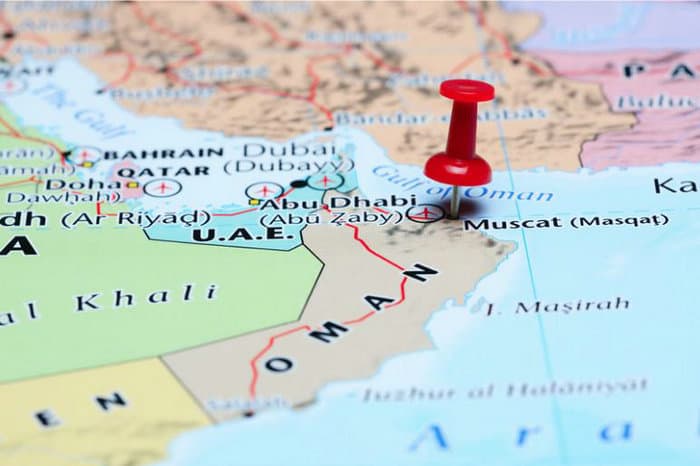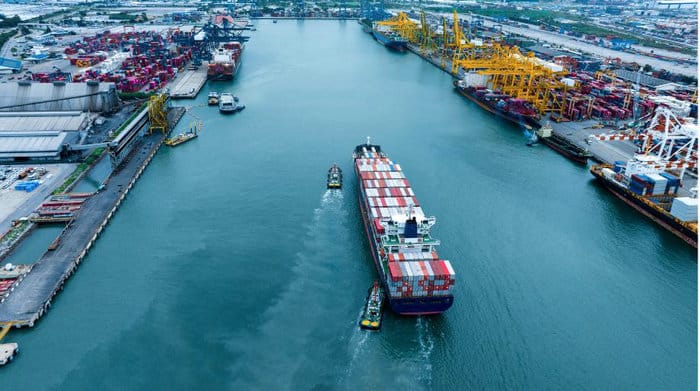
Shipping goods from China to Oman has become an integral part of global trade, reflecting Oman’s strategic location at the crossroads of trade routes and China’s position as a manufacturing powerhouse. The process involves a series of logistical steps and is influenced by various factors such as cost, transit time, and the nature of goods transported. Businesses involved in this international trade must navigate a range of shipping options to ensure efficient and cost-effective delivery.
The maritime route is commonly used for freight from China to Oman due to its cost-efficiency for bulk goods. Major Chinese ports like Shanghai, Ningbo, and Shenzhen are well-equipped to handle large volumes of cargo destined for Middle Eastern markets. Meanwhile, the Sultanate of Oman, with ports like Salalah and Sohar, serves as a gateway not only to its own markets but also to the broader Middle East and East Africa. Understanding the intricacies of maritime regulations, customs clearance, and local logistics is crucial for a seamless shipping experience.
While ocean freight is predominant, other methods, such as air freight, are also available for more time-sensitive deliveries. Though more expensive, air freight enables businesses to expedite the shipment of high-value or perishable goods. The choice between sea and air transport requires careful consideration of trade-offs between cost and speed. As global trade continues to evolve, shipping from China to Oman remains a key component of international commerce, demanding expertise and attention to detail.
Overview of Shipping from China to Oman
Shipment from China to Oman is a vital component of global trade, accommodating both corporate and individual needs. The process utilizes various methods of shipping, including air freight, sea freight, and sometimes road or rail for parts of the journey.
Sea Freight: Sea freight from China to Oman is the most common method due to its cost-effectiveness for heavy or bulky items. Ports like Guangzhou, Shenzhen, and Shanghai in China are some of the busiest, with direct and indirect shipping routes to the Port of Sohar and Port Sultan Qaboos in Oman.
- Transit Time: The average transit time for sea freight can range between 20 to 55 days, depending on the shipping service chosen.
- Container Options: Customers can select either LCL shipping (Less Than Container Load ) or FCL shipping (Full Container Load), based on their shipment volume.
Air Freight: For expedited shipments, air freight from China to Oman is the preferred option, though it is more expensive. Major airports in China, such as Beijing Capital International Airport and Shanghai Pudong International Airport, connect to Muscat International Airport in Oman.
- Transit Time: Air freight transit typically takes between 2 to 7 days.
- Cargo Flights: Regular cargo flights operate between the two countries, facilitating trade and enabling quick delivery of time-sensitive goods.
When considering shipping from China to Oman, it’s imperative to consider customs regulations, potential delays, and the cost variations influenced by fluctuating demand and global economic conditions. Engaging with reliable shipping companies and forwarders can provide insightful guidance and streamlined logistics solutions.
Shipping Method
Transporting goods from China to Oman can be done through sea freight, air freight, or overland via land transport. Each mode offers different advantages depending on the specific needs, such as cost, volume, and delivery timeframes.
Sea Freight
Sea freight from China to Oman is often the most cost-effective option for shipping large volumes of goods. Most cargo ships depart from major Chinese ports like Shanghai, Ningbo, and Shenzhen, heading towards the Omani ports of Salalah and Sohar.
- Advantages: High volume capacity, lower cost for bulk shipments
- Disadvantages: Longer transit times compared to air freight
Air Freight
For time-sensitive shipments, air freight service from China to Oman is the preferred choice. Major airports in China, including Beijing Capital International Airport and Guangzhou Baiyun International Airport, connect to Muscat International Airport in Oman.
- Advantages: Faster delivery, ideal for high-value or perishable goods
- Disadvantages: More expensive, limited by cargo weight and size
Land Transport
Land transport is mainly used for goods movement within the region or from nearby countries to Oman. Trucks and rail services offer flexible inland distribution from seaports or airports to final destinations.
- Advantages: Door-to-door delivery, flexible routing
- Disadvantages: Varies by geography, suited for certain types of cargo
Express Shipping Service
Express delivery refers to the fastest method of shipping available. With express delivery, the shipment leaves the warehouse or pickup location almost immediately after placing the order. The package is then transported via the quickest delivery route, which is usually air freight for international shipping. Express delivery aims to get the package delivered to the recipient as quickly as possible, even if it costs more than standard shipping. Customers pay an additional fee for the expedited service and faster transit times associated with express delivery.
- Advantages: high speed, reliability, convenience
- Disadvantages: high costs, size/weight constraints
Door-to-door Shipping Service (DDP)
DDP service from China to an address in Oman can be done through DDP air freight and DDP sea freight. We receive the goods at our warehouses in China, or we pick them up directly from your factory. Then, the goods are shipped to the provided address in Oman via air or sea freight, with duties and taxes paid upfront as part of the DDP service.
- Advantages: convenience, operational efficiency, flexibility
- Disadvantages: pricing, area restriction
Key Shipping Routes

Shipping containers to Oman from China involves key ports in both countries that facilitate the transfer of goods through well-established maritime routes.
| Major Airports in China | Major Airports in Oman |
| Hangzhou Xiaoshan International Airport | Salalah Airport |
| Beijing Capital International Airport | Muscat International Airport |
| Shanghai Pudong International Airport | |
| Hong Kong International Airport | |
| Shenzhen Bao’an International Airport | |
| Guangzhou Baiyun International Airport |
| Major Seaports in China | Major Seaports in Oman |
| Shanghai Port | Port Sultan Qaboos |
| Ningbo Port | Port of Salalah |
| Tianjin Port | Port of Soharr |
| Guangzhou Port | Port of Khasab |
| Dalian Port | Port of Shinas |
| Qingdao Port | Port of Duqm |
Key factors of the major ports that handle the shipping process from China to Oman:
- Shanghai Port: Known as the world’s busiest container port, Shanghai is pivotal for trade between China and Oman. It offers extensive shipping services with state-of-the-art facilities.
- Shenzhen Port: Comprised of multiple terminals, like Yantian and Shekou, Shenzhen is a major player in electronics and machinery exports.
- Port Sultan Qaboos: Located in Muscat, this port is one of Oman’s primary gateways for imports, providing modern infrastructure for trade.
- Sohar Port: Positioned outside the Strait of Hormuz, Sohar Port facilitates direct access to global trade routes, accommodating a wide range of cargo.
Shipping Costs
Shipping Rates from China to Oman are influenced by factors such as the mode of transport and the specifics of the cargo.
Cost Comparison by Mode
Cost of Sea Freight
| Origin City | Destination City | Estimated Cost Range |
| Shanghai | Muscat | $1,800 – $4,500 |
| Ningbo | Sohar | $1,900 – $4,800 |
| Qingdao | Salalah | $1,700 – $4,200 |
| Xiamen | Duqm | $1,800 – $4,500 |
| Guangzhou | Muscat | $1,600 – $4,000 |
| Tianjin | Sohar | $1,900 – $4,800 |
Air Shipping Charges
| From (China) | To (Oman) | Estimated Cost (Per kg) |
| Shanghai | Muscat | $2.00 – $5.00 |
| Beijing | Muscat | $2.50 – $5.50 |
| Guangzhou | Muscat | $2.00 – $5.00 |
| Shenzhen | Muscat | $2.00 – $5.00 |
Factors Affecting Cost
Several factors influence the cost of shipping:
- Weight and Volume: The cost is directly proportional to the weight and volume of the shipment.
- Type of Goods: Special goods, such as hazardous materials, may incur additional handling fees.
- Distance: The further the shipping distance, the higher the cost.
- Service Type: Expedited shipping services cost more than standard services.
Transit Times
The transit times from China to Oman depend on whether goods are shipped by sea or air.
Average Transit Time by Sea
Shipping containers from China to Oman by sea generally takes between 20 to 55 days. The specific route, sea conditions, and departure and arrival ports can influence the exact time. Major Chinese ports like Shanghai, Shenzhen, and Ningbo commonly service routes to Sohar and Salalah ports in Oman.
| Chinese Port | Omani Port | Estimated Transit Time (Days) |
|---|---|---|
| Shanghai | Sohar | 25-30 |
| Shenzhen | Salalah | 20-25 |
| Ningbo | Sohar | 22-28 |
| Ningbo | Muscat | 40-45 |
| Qingdao | Salalah | 35-40 |
| Xiamen | Duqm | 30-40 |
| Guangzhou | Muscat | 28-35 |
| Tianjin | Sohar | 50-55 |
Note: These are estimates and are subject to change due to unforeseen factors like weather and port congestion.
Average Transit Time by Air
Shipping cargo from China to Oman by air usually takes about 2 to 7 days, with variations stemming from factors like the airline’s flight schedule, route, transit stops, and the chosen air cargo services. Flights may depart from major airports such as Beijing Capital International or Guangzhou Baiyun International and arrive at Muscat International Airport in Oman.
| Chinese Airport | Omani Airport | Estimated Transit Time (Days) |
|---|---|---|
| Beijing | Muscat | 3-5 |
| Beijing | Salalah | 3-5 |
| Guangzhou | Muscat | 4-7 |
| Guangzhou | Sohar | 2-4 |
| Shanghai | Muscat | 2-4 |
| Shenzhen | Muscat | 2-4 |
| Xiamen | Duqm | 3-5 |
| Qingdao | Muscat | 3-5 |
Customs and Regulations
When shipping from China to Oman, it’s crucial to understand the regulations and procedures that govern exports from China and the import requirements in Oman. These guidelines ensure smooth customs clearance and compliance with international trade laws.
Chinese Export Procedures
China has a well-defined export procedure that must be adhered to by all exporters. The key steps involve obtaining the Export Goods Declaration from Chinese customs, which requires detailed documentation, including a Commercial Invoice, Packing List, and Sales Contract. It is also essential for exporters to classify their goods accurately using the Harmonized System (HS) code. They must ensure that all export taxes and duties have been calculated and paid.
Omani Import Requirements
Imports into Oman are subject to Omani customs laws and regulations. Importers need to provide a Certificate of Origin and an Import Manifest, along with a detailed Bill of Lading. All documents must be in Arabic or accompanied by a certified translation. Importers should also be aware that certain goods may be subject to inspection or require special approvals, licenses, or permits from Omani authorities. There are also prohibited items that cannot be imported under any circumstances, and a list of these can be found on the official Omani customs website.
Cargo Insurance

Cargo insurance is essential when shipping from China to Oman to protect against potential losses during transit. This insurance covers the value of the goods and the cost of shipping in case of damage or loss.
Insurance Options
- Insurance Coverage: There are generally two types of cargo insurance available:
- All-Risk Insurance: This policy provides comprehensive coverage, including protection from physical loss or damage from any external cause.
- Named Perils Insurance: It offers a narrower protection based on specific risks named in the policy, such as theft, fire, or weather-related damage.
- Insurers: Typically, the seller or buyer can arrange insurance through:
- Freight forwarders: They usually offer cargo insurance as part of their services.
- Insurance companies: Direct dealings with insurance companies might offer more customization.
- Valuation: The insurance value is declared based on:
- Invoice value: The commercial value of the goods as per the invoice.
- Freight charges: Shipping costs are often included in the total declared value.
- Premium: Insurance premiums are calculated as a percentage of the declared value.
Claims Process
Documentation: To facilitate claims, the following is necessary:
- Bill of Lading: This is the contract of carriage and serves as proof of ownership.
- Insurance Certificate: It details the insurance policy and should accompany the claim.
- Commercial Invoice: Necessary to establish the value of the goods insured.
- Damage Reports: Inspection reports and photographic evidence of damage are critical.
Procedure:
- Report promptly: Notify the insurer immediately upon discovery of loss or damage.
- Submit documents: Provide all required documents to the insurer without delay.
- Inspection: An inspection by the insurer’s representative might be requisite.
Insurers generally have a set period within which claims must be filed after delivery – usually within 30 days. Claimants should adhere strictly to these deadlines to avoid forfeiture of their rights to compensation.
Packaging and Labeling Requirements
When shipping from China to Oman, adherence to international packing standards and specific labeling requirements for the Middle Eastern market is crucial for smooth customs clearance and delivery.
International Packing Standards
International packing standards necessitate that goods be secured in a manner that ensures their safe arrival. Exporters must use sturdy, high-quality materials and pack items to withstand handling and environmental stresses. The pallets used should be:
- Heat-treated or fumigated with a valid International Standards For Phytosanitary Measures No. 15 (ISPM 15) mark.
- Made of wood that is free from bark, live pests, or signs of decay.
Cargos must also:
- Be packed to minimize movement and friction.
- Be waterproof if the contents could be damaged by moisture.
Labeling for Middle Eastern Markets
Labels for shipping to Oman must include specific information in both English and Arabic. Labels need to display:
- Product name
- Country of origin
- Expiry date (if applicable)
- A list of ingredients or materials used
Labels should be affixed securely on the package, clear, and easy to read. They must also:
- Understand the transportation conditions to remain legible upon arrival.
- Comply with Oman’s regulatory standards regarding the labeling of special categories such as food, pharmaceuticals, and cosmetics.
Tracking and Technology
Integrating advanced tracking systems and technology is crucial for enhancing transparency and efficiency in shipping from China to Oman.
Real-Time Cargo Tracking Systems
These systems provide stakeholders with instant access to cargo locations. Utilizing a combination of Global Positioning System (GPS) and mobile networks, real-time tracking systems allow for:
- Instant updates: Shippers and receivers can get location data in real-time.
- Predictive analytics: The technology helps anticipate delays and calculate estimated arrival times
Technology in Supply Chain Management
Supply chain management technology streamlines operations from production to delivery. Key components include:
- Warehouse management systems (WMS): They optimize storage and picking processes.
- Transportation management systems (TMS): These systems assist in route planning and carrier selection, which is crucial for cost efficiency.
Industry Challenges and Trends
The shipping industry between China and Oman faces specific challenges that necessitate adaptation and presents new trends that players in the sector must leverage to stay competitive.
Regulatory Changes
China has implemented stringent regulations on export practices and customs procedures, which can lead to increased processing times and costs. For instance, the “Advanced Manifest Regulation” requires the submission of cargo information 24 hours before loading, impacting the shipping schedules. Furthermore, Oman has adjusted its import regulations to favor the diversification of its economy, affecting how Chinese goods are received.
Emerging Trends in Logistics
Technological integration is a prominent trend in logistics, with Chinese companies investing heavily in digital solutions like blockchain tracking and AI-driven logistics platforms for real-time updates. Additionally, there’s a distinct pivot towards sustainability, where shipping companies that invest in eco-friendly vessels and practice green logistics are increasingly favored in the industry.
Why Choose Us? Luckystar Logistic
Luckystar is a distinguished shipping agent founded in 2022. As a licensed Non-Vessel Operating Common Carrier (NVOCC) with the Federal Maritime Commission (FMC), Luckystar specializes in providing economical global shipping solutions with excellent service. Led by a veteran logistics team with over 20 years of industry expertise, Luckystar is dedicated to supplying dependable, flexible, and responsive international door-to-door freight transport and efficient shipping services.
Here’s why partnering with Luckystar is advantageous:
- Reliable On-Time Delivery: We minimize delivery delays, ensuring timely shipment arrival, which is vital for businesses to swiftly supply goods to customers.
- Global Shipping Reach: We ship to virtually any location worldwide, presenting tremendous global growth opportunities for businesses wanting to expand their reach abroad.
- Easy Shipment Tracking: Our stringent processes enable live tracking, letting you easily monitor shipment progress at every transportation stage for peace of mind.
- Personalized End-to-End Service: A dedicated Luckystar team member personally supervises your door-to-door shipment from start to finish while proactively updating you throughout for transparency.
When dealing with hazardous materials, it’s vital to engage seasoned shipping experts, guaranteeing safe, compliant handling. Partnering with Luckystar gives you confidence that your hazardous goods shipments are in capable hands.
Seeking an accomplished freight forwarder? Contact Luckystar – we eagerly assist companies in expertly shipping cargo internationally at extremely affordable rates. Don’t wait; reach out now to leverage our unparalleled cheap international shipping!
